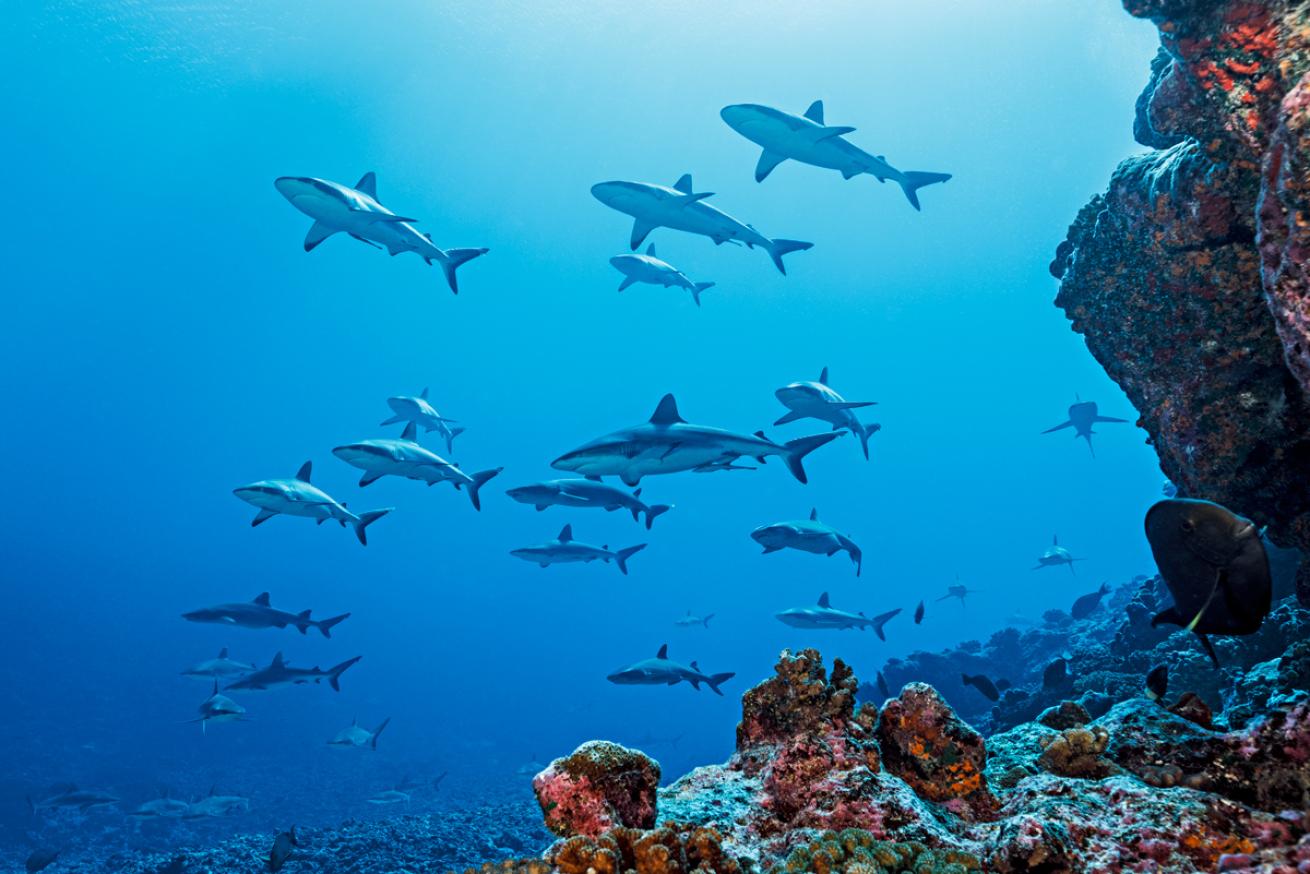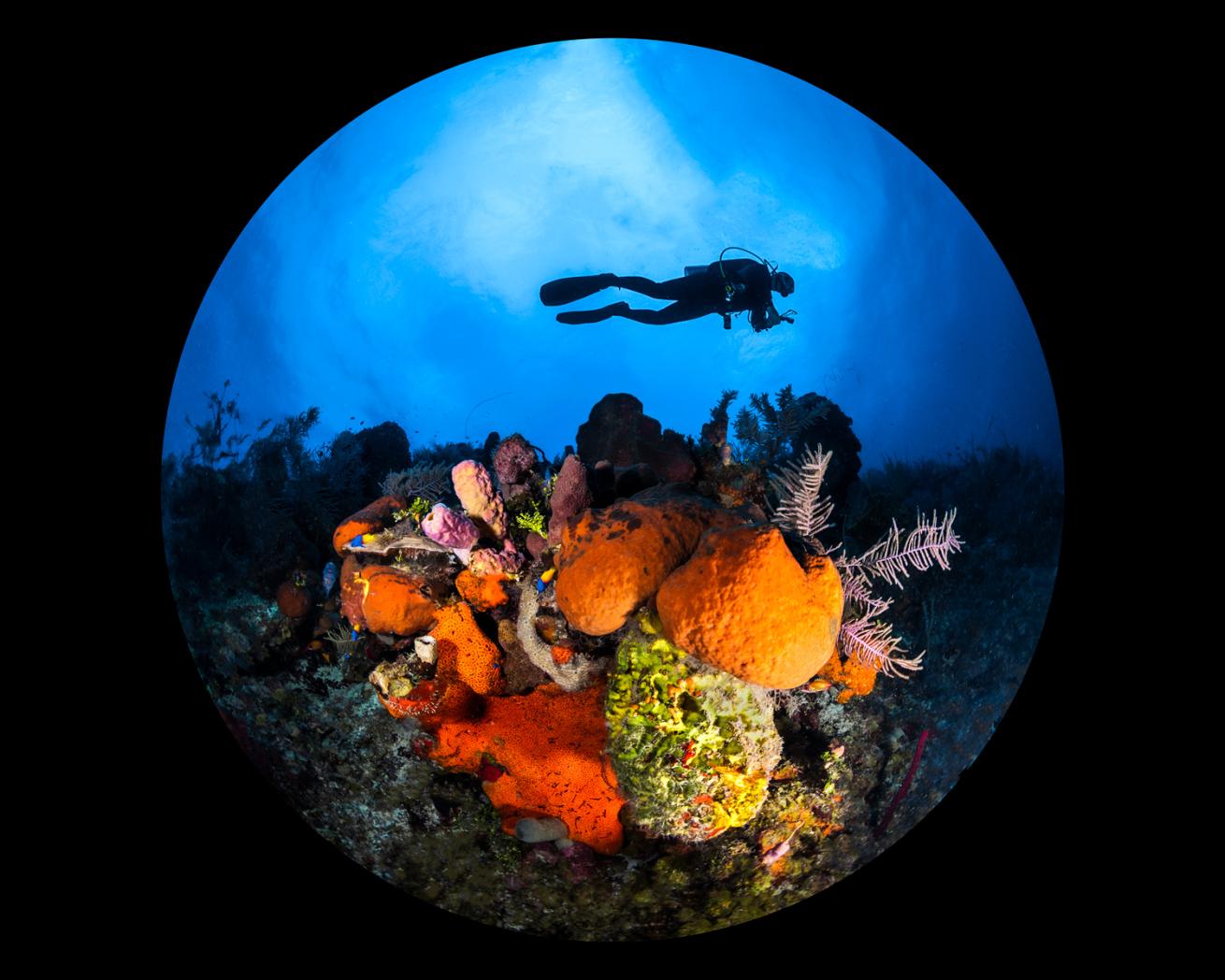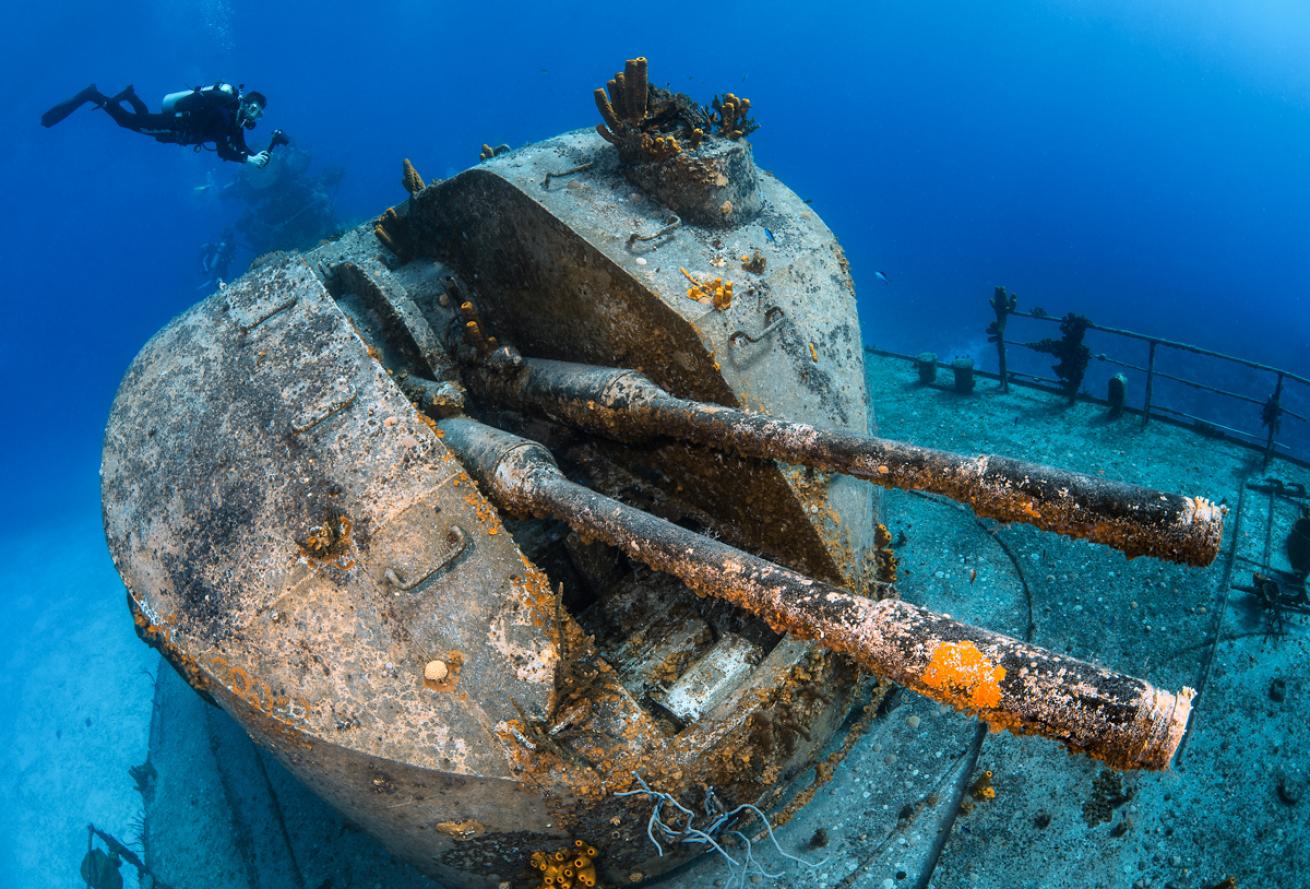Great Dive Getaways for Beating the Winter Blahs

Brandon ColeDivers can’t go wrong at French Polynesia’s sharky Tetamanu Pass off Fakarava Atoll.
Planning a trip to one of these dive hotspots? Here’s what you need to know. Featuring insight from locals, tips for timing seasonal experiences, and the scoop on favorite dive sites, as well as some lesser-known sites you’ll want on your radar too.
French Polynesia
Under the Radar The legendary atoll passes of Fakarava and Rangiroa draw the bulk of divers to French Polynesia’s famous Tuatu Archipelago. But a sweet little stay on Manihi makes it worth veering even farther off the not-so-beaten atoll path.
Blue Way Dive Lodge, which opened in 2019, has just one guest room and one bungalow for guests on its own private motu. The resort is run by a French couple who are your guides underwater. It’s a private paradise close to Tairapa Pass, which teems with barracuda, Napoleon wrasse, jacks and sharks. Crowd-free diving guaranteed.
The Classic Dive
Fakarava’s south pass, Tetamanu, is as sharky as dives get, with a wall of hundreds of gray reef sharks—and frequent appearances by great hammerheads and mantas too. Most dive shops only dive it on the incoming tide, but some also make time for an outgoing-tide dive on the reef, where you’ll likely spot Napoleon wrasse and giant schools of barracuda.
Dive Report
I spent nine days diving in the Tuamotus recently, and was floored by the sharks not only at Fakarava’s famous south pass but at the lesser-known north pass, Garuae, too. We saw a great hammerhead, and were told a tiger shark had recently been seen too.
At Rangiroa’s Tiputa Pass, the highlight was seeing day-old dolphins (local dive shops track their births) nursing from their mothers as soon as we entered the water. Something I’ll never forget.
Plan a Trip
From around July to early November, humpback whales arrive in the waters of Moorea, Tahiti and Bora Bora in the Society Islands as well as the Austral Islands (Rurutu) to give birth. There’s perhaps no underwater experience more moving than finning within yards of a curious baby whale hugging close to its mother in these crystal-clear waters.
Second-Time Visitor
On a repeat visit to the Tuamotus, hit Tikehau if you missed it the first time around. The atoll’s single narrow pass, Tuheiava, is jammed with more sharks and schooling fish, and the overwater bungalows at Le Tikehau by Pearl Resorts give you a taste of the Bora Bora life, sans the crowded lagoon.
Belize
Under the Radar
A World War II sugar-transporting ship, the 375-foot-long Witconcrete, was purpose-sunk off Turneffe Atoll Marine Reserve in December 2021. Look for it to become one of Belize’s marquee dives in coming years as fish and corals move in.

Beth WatsonA colorful reef off Belize’s Turneffe Atoll near Calabash Caye.
The Classic Dive
At over 400 feet deep and over 1,000 feet across, the Great Blue Hole is Belize’s most famous dive site and the world’s largest ocean sinkhole. Below 100 feet here, divers can see stalactite formations created when the cave system was still above sea level. You’ll see the most coral and fish life on the reef surrounding the outside of the sinkhole, however, where reef and sometimes even bull sharks have been known to bolt out of the blue.
Dive Report
“Diving the Elbow recently, at the southern tip of Turneffe Atoll, with Blackbird Caye Resort was amazing,” says underwater photographer Beth B. Watson. “We encountered blacktip reef sharks hunting schooling horse-eye jacks. The jacks were darting about, breaking into smaller groups, avoiding predation—a mesmerizing behavior to watch. The highlight was observing dolphins teaching their babies to hunt by guiding them through the school of jacks.”
Plan a Trip
March to June is prime time for spotting whale sharks at Gladden Spit, about 20 miles off mainland Belize. The world’s biggest fish come here in search of spawning dog and cubera snappers, which do their thing around the full moon. Dive shops like Splash Dive Center time your entry for the best chance at diving with the gentle giants. Second-Time Visitor
First-timers usually have Ambergris Caye and Caye Caulker on their itinerary. But repeat visitors shouldn’t miss Turneffe Atoll to the southeast, a big-fish magnet (think dolphins, eagle rays and the occasional hammerhead) with more than 70 dive sites and some of Belize’s most epic wall dives.
Cayman Islands
Under the Radar Most divers here beeline it for boats, so the excellent shore diving on Grand Cayman’s west side in particular can come as a surprise. Sunset House has an excellent house reef and even a small wreck to explore in 60 feet of water. To the north, Turtle Reef in West Bay is the spot to see tarpon in a cave and a mini reef covered with colorful sponges.

Alex MustardTurret guns on the M/V Captain Keith Tibbetts make for a popular photo op off Cayman Brac.
The Classic Dive
With viz often pushing 100 feet, the USS Kittiwake—a former Navy submarine rescue vessel purpose-sunk off Seven Mile Beach to form an artificial reef—is one of the Caribbean’s top wreck dives.
Dive Report
“An exciting thing occurring on our reefs recently has been the arrival of multiple seahorses at sites around the island,” says Drew McArthur, a PADI Master Instructor with Grand Cayman dive operator Divetech. “They’ve always been here, but over the last few months these cute little guys have become more abundant. Not only are divers seeing more and more of them, the seahorses seem to be hanging out in the same spots for longer periods of time.”
Plan a Trip
Hawksbill turtles are regulars around the Caymans. But April and May bring an influx of loggerheads, McArthur says. “Individually, these turtles are a sight to behold due to their impressive size,” he says. “And during mating season it is not uncommon to find three or four turtles at a time in one big pile—either on the sand or floating in the water.”
McArthur points to sites along Grand Cayman’s north-west tip, including Orange Canyon and Big Tunnels, as spots where divers might see the turtles mating at the surface during a dive.
Second-Time Visitor
Caribbean fruit bats and the endangered Cayman Brac parrot call Cayman Brac home. The easternmost island in the Caymans, just a 30-minute flight from Georgetown, is a quiet haven for divers seeking quiet coves, cliff walks and nature trails in between diving Buccaneer Reef or the 330-foot-long M/V Captain Keith Tibbetts wreck.










